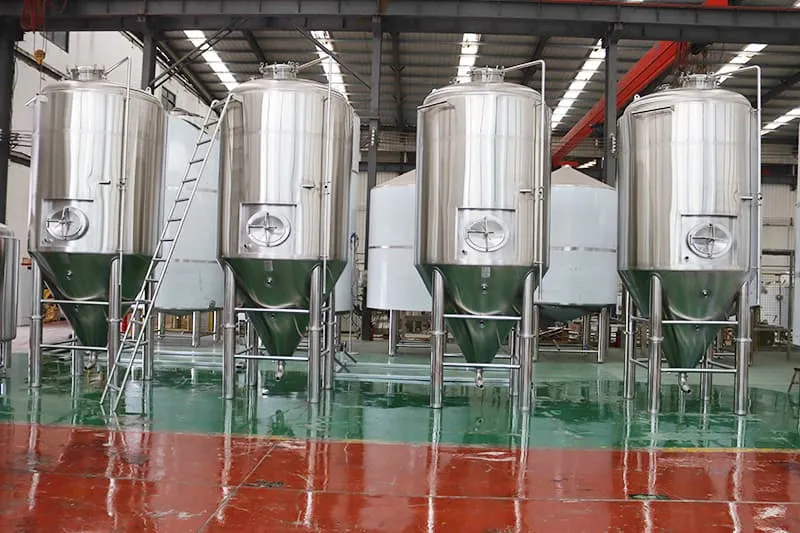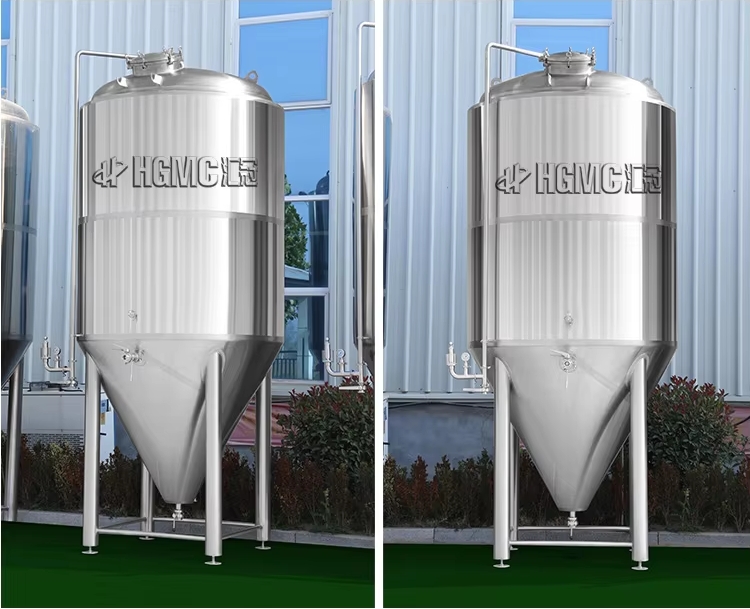What Is a Fermenting Tank and Why It Matters?
A fermenting tank is a specialized container designed to facilitate the fermentation process. It’s where the magic happens—yeast or bacteria interact with sugars in the raw materials to produce alcohol, carbon dioxide, and flavor compounds. Whether you’re crafting beer, wine, kombucha, or even yogurt, fermenting tanks play a pivotal role.
Why does it matter? Because the right fermenting tank can elevate the quality of your product, optimize efficiency, and even reduce costs. The material, design, and capacity of the tank influence factors like temperature control, contamination risks, and overall fermentation performance.

Types of Fermenting Vessels and Their Uses
Primary vs. Secondary Fermenters
Your first big choice is between types of fermenters. Each has good and bad points.
Glass carboys are clear. You can see inside. They don’t scratch easily. But they break if you drop them.
Plastic buckets cost less. They are light. They don’t break. But they scratch. Germs can hide in the scratches.
Stainless steel lasts a long time. It cleans well. It won’t break. But it costs more, and you can’t see inside.
How to use fermentation vessels?
The process of using a fermentation vessel involves several key steps to ensure a smooth fermentation and high-quality wine. Here are a few key steps for using a fermentation vessel:
Cleaning and Disinfection: Before use, thoroughly clean the container and its accessories and disinfect them with appropriate disinfectants to prevent contamination.
Add raw materials: Pour raw materials such as malt, sugar, yeast, and water into the fermentation container according to the recipe and stir evenly.
Control temperature: Make sure the fermentation container is placed in a suitable temperature range to support the activity of yeast. Different types of beer require different temperatures.
Sealed container: Use a sealing lid and air valve to seal the container to ensure that gas can escape but does not allow outside air to enter to prevent contamination.
Monitoring: Regularly check the status of fermentation, including the generation of foam, bubbles, and temperature changes, to ensure that fermentation is proceeding normally.
Secondary fermentation: After the primary fermentation is over, if secondary fermentation is required, the beer can be transferred to another container to remove precipitation and impurities.
Cleaning and maintenance: After the fermentation is over, clean the container in time to prevent residues from affecting the next use.
What factors should be considered when choosing a fermentation vessel?
Size and capacity
When choosing a fermentation vessel, the size of the vessel must match the batch size you are brewing. Make sure the vessel has enough headroom to contain the foam and gas produced during the fermentation process and avoid overflow. At the same time, the right size can also help improve fermentation efficiency and ensure that the yeast can work in the best environment.
Material and durability
Different materials have their advantages and disadvantages, so when choosing a container, you should fully consider its durability, insulation properties, and impact on the taste of the beverage. For example, stainless steel containers are corrosion-resistant and easy to clean, which is suitable for large-scale brewing; while glass containers have less impact on flavor but are more prone to cracking. Understanding the characteristics of each material can help you make an informed choice.
Temperature control
The fermentation temperature is crucial to the activity of yeast and the flavor of beer. Some fermentation vessels are equipped with built-in temperature control functions, which can be precisely adjusted to meet the needs of different types of beer. Other fermentation vessels may require additional equipment, such as cooling jackets or temperature control systems, to maintain the appropriate fermentation temperature. Choosing the right temperature control equipment can significantly improve brewing results.
Cleaning and disinfection
The design of the fermentation vessel should provide easy access to the interior, which is crucial for thorough cleaning and disinfection. Make sure the opening of the fermentation container is large enough to facilitate the use of cleaning tools and avoid the breeding of residues and bacteria. At the same time, the container should be easy to disassemble and assemble to facilitate daily maintenance and ensure that each use is carried out under optimal hygienic conditions, thereby improving the quality of the final product.
Fermentation vessel size selection
Small container: suitable for home brewing and experimental brewing, usually between 5-50 liters. Small containers are easy to move and clean, suitable for beginners.
Medium container: suitable for small and medium-sized brewing, usually between 50-1000 liters. This container can meet the needs of family gatherings and small businesses.
Large container: commonly used in commercial brewing, usually above 500 liters. It can be mass-produced but requires professional equipment and technical support.
The fermentation tank is where the beer carry out the fermentation process, it provides a place suitable for life activities and metabolism for microorganisms. To adapt to the use of different sizes of breweries, Hgmc produced a variety of sizes and specifications of fermentation tanks. Customers can choose the most suitable fermentation tank according to their needs. As there are many types of beverages that need to be fermented, there are also many types of fermenters. Currently, Hgmc has a lot of experience in the production of beer, wine, cider fermentation vessel, our engineers can also customize the design of fermenters according to your requirements.

FAQ
What type of container is best for beer fermentation?
The best containers for beer fermentation are usually closed stainless steel fermenters because they effectively prevent oxygen and contaminants from entering while controlling temperature and pressure.
How should the size of the container be selected?
The size of the container should match the size of the batch, ensuring that there is enough headspace to accommodate the foam generated during the fermentation process to avoid overflow.
How to control the fermentation temperature?
Some fermentation vessels are equipped with built-in temperature control systems, while other vessels may require additional equipment (such as cooling jackets) to regulate the temperature to maintain the optimal fermentation environment.
What is the best way to clean the fermentation container?
Wash the container thoroughly with an unscented detergent and hot water, and then disinfect it with a suitable disinfectant to ensure that it is hygienic before and after use.
